A conversation is 2 or more people talking together.
The context and the people involved in a conversation affect the language used. Generally speaking, conversations can be formal or informal.
Formal conversations are official and impersonal.
|
Formal Conversation Contexts |
|
Job interview |
|
Giving a speech |
|
First time meeting someone |
|
Official ceremonies |
Informal conversations are casual with people we know.
|
Informal Conversation Contexts |
|
Chat with friends/family |
|
Dinner parties |
|
Game night |
|
Talking with coworkers you know well |
Click the conversation type for more information.
Greetings are used to begin a conversation.
Used both in formal and informal conversations.
-
Hello
-
Hi
-
Good morning
-
Good afternoon
-
Good evening
-
How are you?
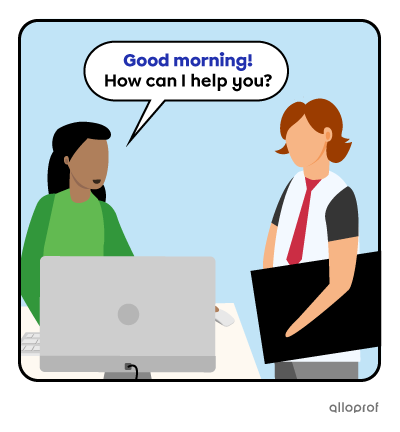

Formal greetings are impersonal and keep a certain distance between the speakers.
-
It is a pleasure to meet you
-
How do you do?
-
Nice to meet you
-
Pleased to meet you


Informal greetings are casual and used with people we know very well.
-
Hey!
-
Yo!
-
What’s up?
-
Good to see you!
-
Long time no see!
-
What’s new?
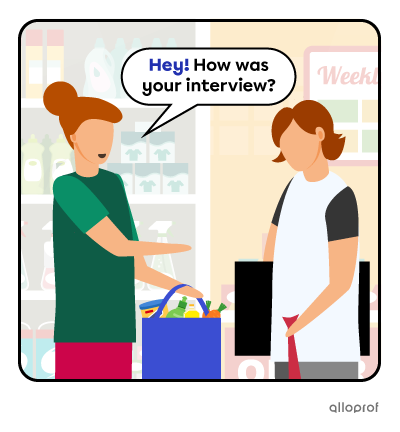
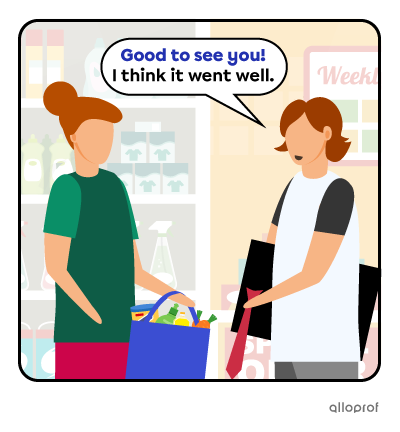
Identifications are used to introduce and ask about another person or yourself. Identifications are often used with greetings.
-
My name is . . .
-
I’m . . .
-
Let me introduce myself, I’m . . .
-
I don’t think we’ve met. I’m . . .


-
This is . . .
-
Meet . . .
-
This is my friend . . .
-
Let me introduce you to . . .
-
I’d like you to meet . . .
-
Have you met . . .

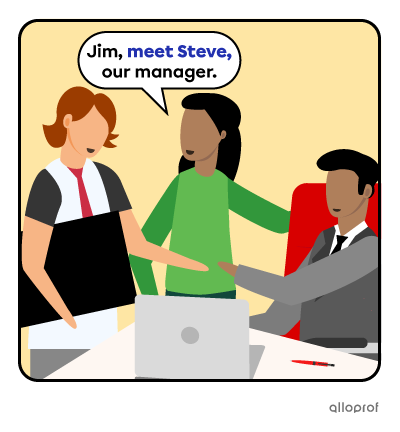
-
What is your name?
-
Who is . . .?
-
And you are . . .?
-
Which group are you in?
-
Who’s your partner for the project?

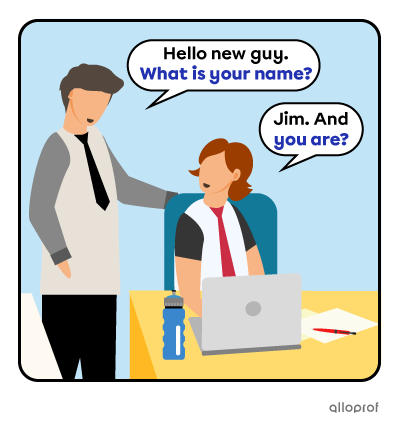
Goodbyes are used at the end of conversations, to close it.
-
Goodbye
-
Bye
-
See you later
-
Have a good day
-
See you tomorrow


Formal goodbyes are used when ending a conversation with people you don’t know very well and in official settings.
-
Enjoy your evening
-
I must be going
-
I have got to go
-
It was nice meeting you
-
It was nice talking to you
-
It was a pleasure
-
it was a pleasure meeting you
-
The pleasure was mine
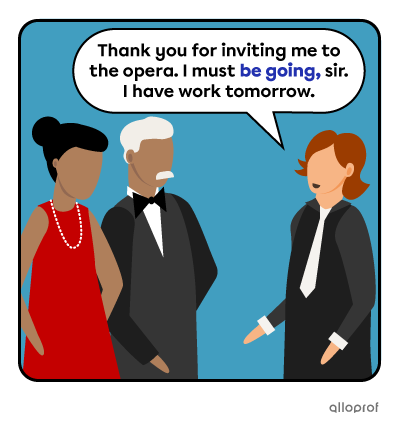

Informal goodbyes are used to end casual conversations with people you know very well.
-
Bye bye
-
Take care
-
Good night
-
Okay, thanks
-
Until next time
-
See you
-
Talk to you later
-
Have a good one
-
Gotta go
-
Take it easy
-
Catch you later
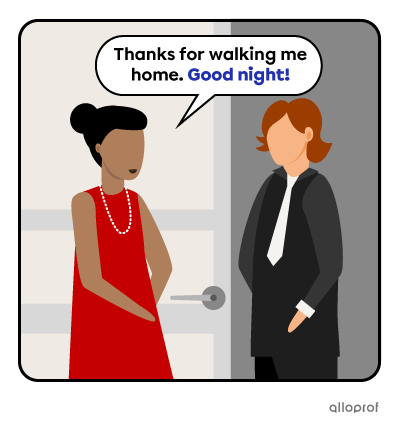

Goodbyes are often used in combination by using 2 expressions together. The most common combinations are done by adding a phrase to the words Goodbye or Bye. It can be added before or after.
|
Adding before: |
Adding after: |
|
See you later, goodbye! It was nice meeting you, goodbye! |
Goodbye, see you later! Goodbye, it was nice meeting you. |
|
See you tomorrow, bye! Have a good day, bye! |
Bye, see you tomorrow! Bye, have a good day! |
Thanks are used to express gratitude, appreciation and recognition. Thanks can be given or accepted.
-
Thank you
-
Thank you very much
-
Thank you so much
-
Thanks
-
Thanks a lot
-
Thanks for everything
-
I owe you
-
I owe you one
-
I’m so grateful
-
Much appreciated
-
You’re a lifesaver
-
You’re the best

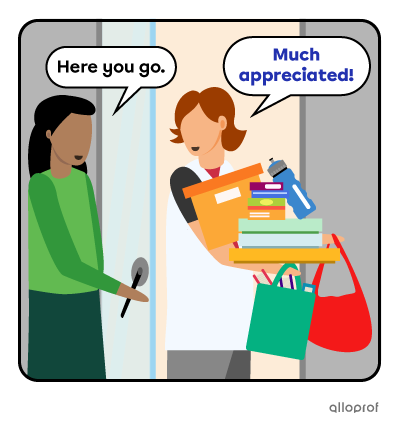
-
You are welcome
-
You are most welcome
-
You’re welcome
-
Welcome
-
It’s my pleasure
-
My pleasure
-
The pleasure’s mine
-
That’s okay
-
Anytime
-
Glad to help
-
Not at all
-
Just doing my job
-
Don’t mention it
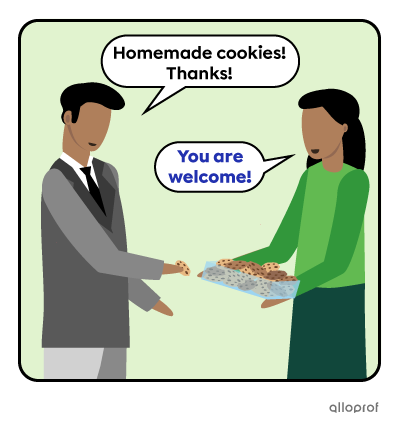
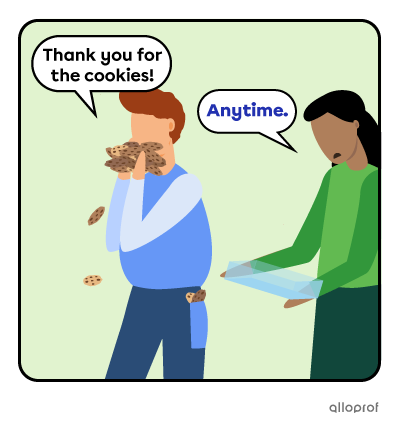
Apologies are used to express regret, to say you are sorry and to ask for forgiveness.
-
I’m sorry
-
Sorry
-
I apologize
-
My apologies
-
Please, accept my apologies
-
Please, forgive me
-
Forgive me
-
Excuse me
-
Pardon me
-
I didn’t mean to . . .
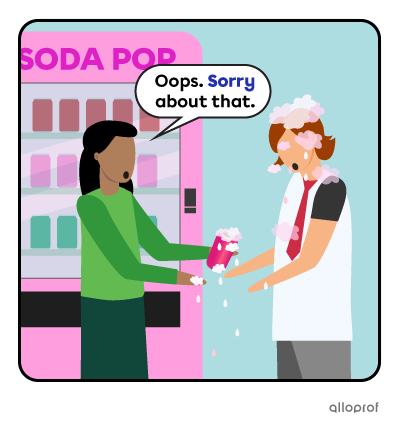
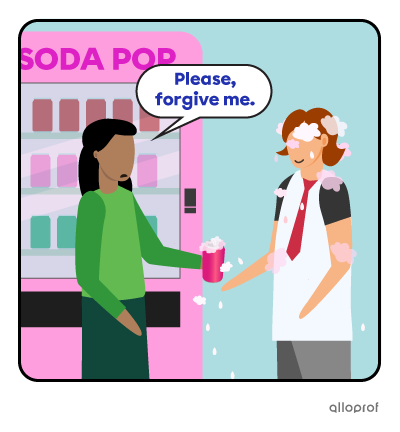
-
That's okay
-
It’s okay
-
That's alright
-
It’s alright
-
Don't worry about it
-
Don't mention it
-
Don't apologize
-
Forget about it
-
It doesn't matter
-
No harm done
-
No need to apologize
-
Never mind
-
You couldn't help it
-
I quite understand

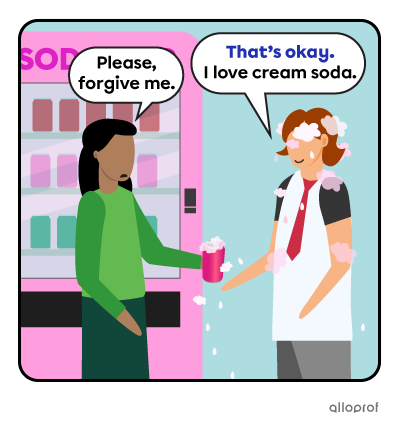
Interruptions are used when you need to say something and someone is busy or already talking.
-
Excuse me
-
I’m sorry to interrupt
-
Pardon me
-
Pardon me for interrupting
-
Can I interrupt?
-
I’m sorry about this, but . . .
-
Before you continue . . .
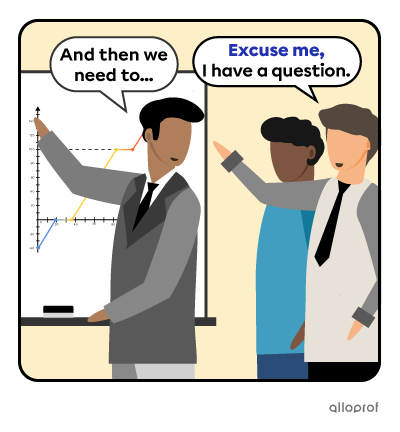
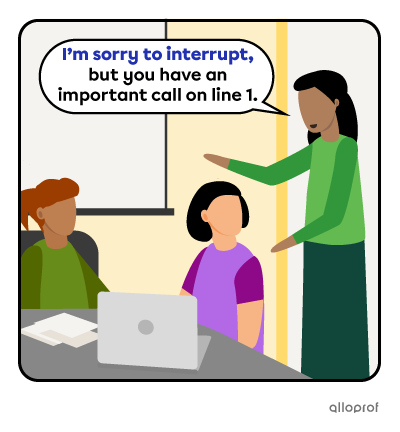
Fillers are used to get more time to think or react to what was said.
-
I mean . . .
-
I think . . .
-
All right . . .
-
Well . . .
-
Let’s see . . .
-
I’ll think about it . . .
-
I’m thinking about it . . .
-
Let me think about it
-
Hold on a second
-
Can I have a minute?


Warnings are used to warn people of a situation or an upcoming situation.
-
Be careful!
-
Watch out!
-
Look out!
-
You’d better . . .
-
I wouldn’t do that if I were you

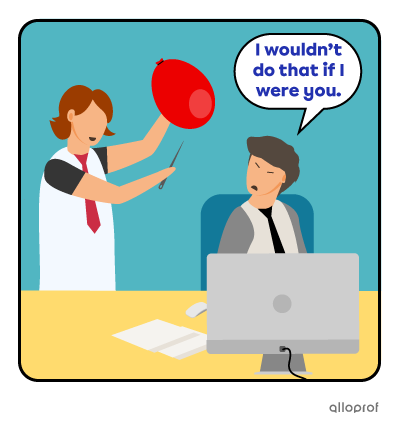
Reassurances are used to comfort, reduce worry and generally support people.
-
You’ll be fine
-
It will be alright
-
The same thing happened to me
-
It’s not important
-
It’s okay
-
No problem
-
Don’t worry about it
-
That’s all right
-
It doesn’t matter

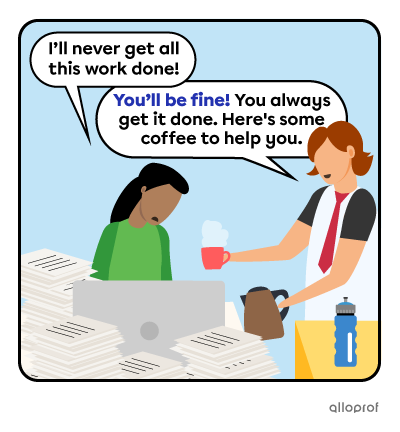
Phone conversation phrases are used to call, answer, reply and take messages.
Answering a Personal Call
-
Hello?
-
Good morning!
-
Good afternoon!
Answering the Phone at Work
-
Hello, this is . .
-
Jenna speaking.
-
Alloprof, how may I help you?
-
Alloprof, Jenna speaking. How may I help you?
-
Thank you for calling Alloprof. How can I help you?


-
Hello, may I speak to Steve?
-
Hello, I would like to speak to Steve, please.
-
Hi, can I talk to Steve?
-
Hi, is Steve there?
-
Hi! Steve, please.
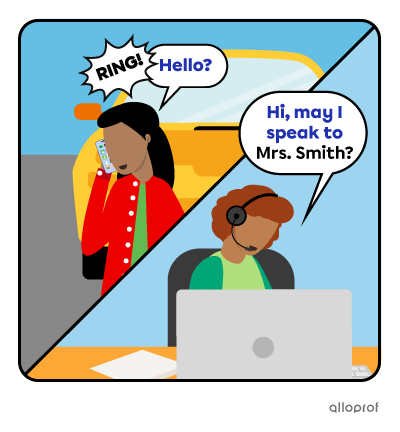
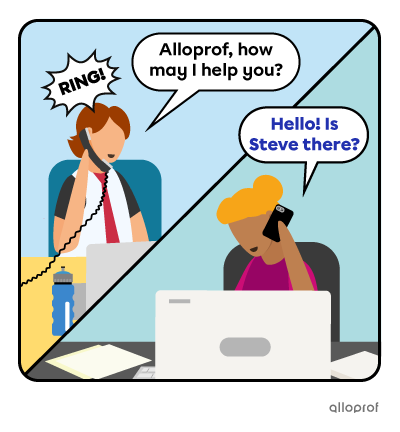
Replying to a personal call:
-
Yes, it’s me.
-
Speaking.
-
Sorry, you have the wrong number.
Replying to a call at work:
-
One moment please.
-
One minute please.
-
Yes, it’s me.
-
Please hold.
-
I’ll place you on hold.
-
I’ll transfer you.
-
I will connect you right away.
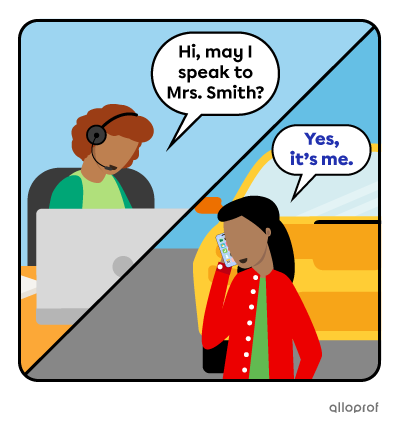
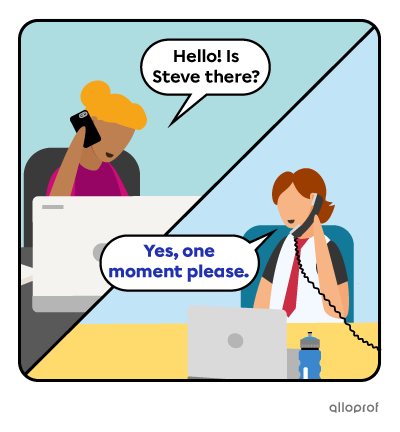
-
Hello, I’m calling about . . .
-
Hello, I’d like some information about…
-
Hello, could you tell me . . .?
-
Hello, I was wondering if you could . . .
-
Hi! Can you help with . . .?
-
Hi! Can you tell me . . .?
-
Hello! I have a question about…
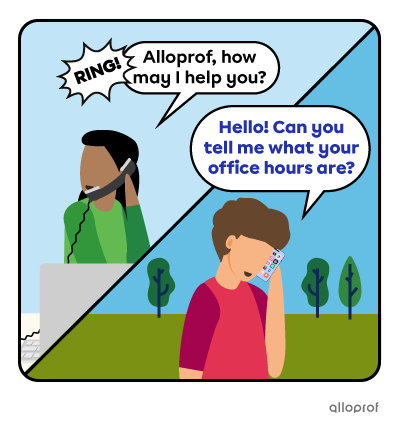
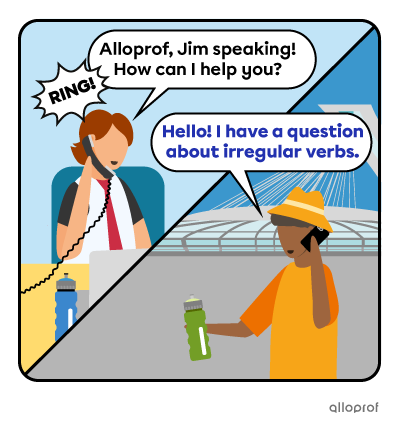
-
May I take a message?
-
Would you like to leave a message?
-
He’s not available. Do you have a message?
-
Sorry, she’s not here. Can I give her a message?
-
May I ask who’s calling?
-
What is your number?
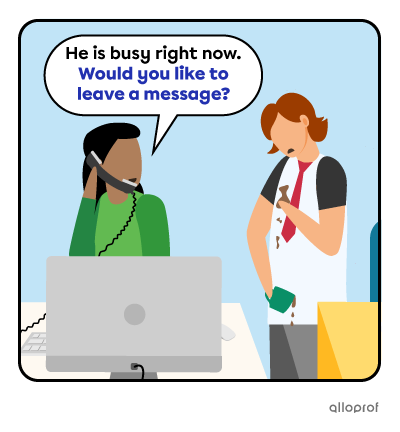
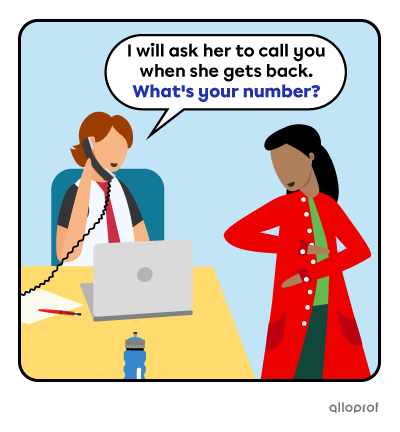
-
This is Ray. Can he call me back at 555-2368?
-
Yes, can he call me back?
-
Ask him to call me back.
-
My name is . . .
-
This is . . .
-
My number is . . .
-
You can reach me at . . .

